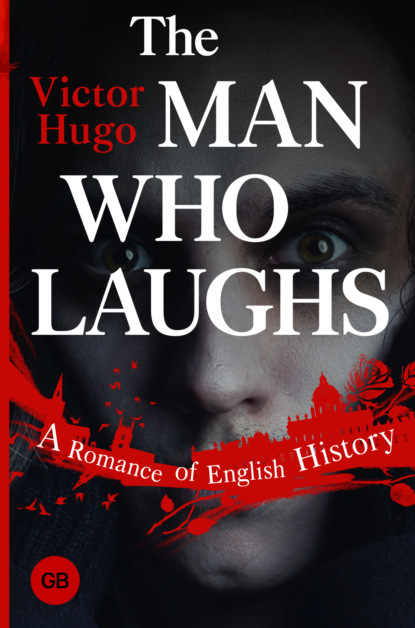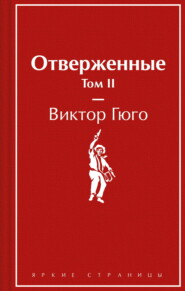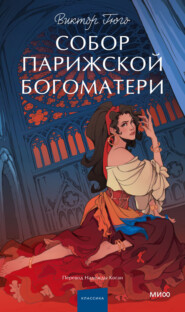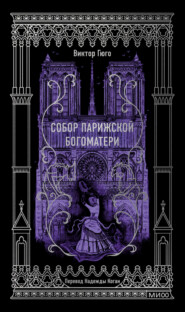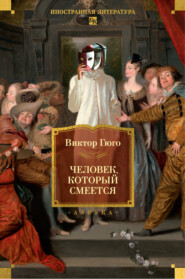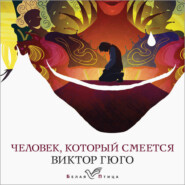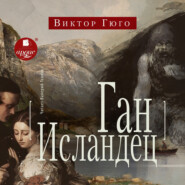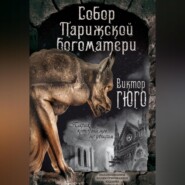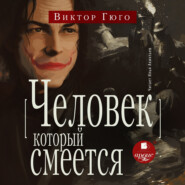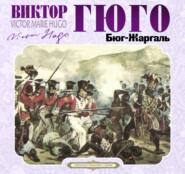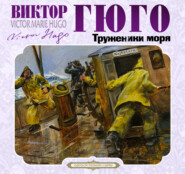По всем вопросам обращайтесь на: info@litportal.ru
(©) 2003-2024.
✖
The Man Who Laughs. A Romance of English History
Настройки чтения
Размер шрифта
Высота строк
Поля
“The Viscount of Kinalmeaky, who is Earl of Cork, in Ireland, is owner of Burlington House, Piccadilly, with its extensive gardens, reaching to the fields outside London; he is also owner of Chiswick, where there are nine magnificent lodges; he also owns Londesborough, which is a new house by the side of an old palace.
“The Duke of Beaufort owns Chelsea, which contains two Gothic buildings, and a Florentine one; he has also Badminton, in Gloucestershire, a residence from which a number of avenues branch out like rays from a star. The most noble and puissant Prince Henry, Duke of Beaufort, is also Marquis and Earl of Worcester, Earl of Glamorgan, Viscount Grosmont, and Baron Herbert of Chepstow, Ragland, and Gower, Baron Beaufort of Caldecott Castle, and Baron de Bottetourt.
“John Holies, Duke of Newcastle, and Marquis of Clare, owns Bolsover, with its majestic square keeps; his also is Haughton, in Nottinghamshire, where a round pyramid, made to imitate the Tower of Babel, stands in the centre of a basin of water.
“William, Earl of Craven, Viscount Uffington, and Baron Craven of Hamstead Marshall, owns Combe Abbey in Warwickshire, where is to be seen the finest water-jet in England; and in Berkshire two baronies, Hamstead Marshall, on the façade of which are five Gothic lanterns sunk in the wall, and Ashdown Park, which is a country seat situate at the point of intersection of cross-roads in a forest.
“Linnæus, Lord Clancharlie, Baron Clancharlie and Hunkerville, Marquis of Corleone in Sicily, derives his title from the castle of Clancharlie, built in 912 by Edward the Elder, as a defence against the Danes. Besides Hunkerville House, in London, which is a palace, he has Corleone Lodge at Windsor, which is another, and eight castlewards, one at Burton-on-Trent, with a royalty on the carriage of plaster of Paris; then Grumdaith Humble, Moricambe, Trewardraith, Hell-Kerters (where there is a miraculous well), Phillinmore, with its turf bogs, Reculver, near the ancient city Vagniac, Vinecaunton, on the Moel-eulle Mountain; besides nineteen boroughs and villages with reeves, and the whole of Penneth chase, all of which bring his lordship £40,000 a year.
“The 172 peers enjoying their dignities under James II. possess among them altogether a revenue of £1,272,000 sterling a year, which is the eleventh part of the revenue of England.”
In the margin, opposite the last name (that of Linnæus, Lord Clancharlie), there was a note in the handwriting of Ursus: Rebel; in exile; houses, lands, and chattels sequestrated. It is well.
IV
Ursus admired Homo. One admires one’s like. It is a law. To be always raging inwardly and grumbling outwardly was the normal condition of Ursus. He was the malcontent of creation. By nature he was a man ever in opposition. He took the world unkindly; he gave his satisfecit to no one and to nothing. The bee did not atone, by its honey-making, for its sting; a full-blown rose did not absolve the sun for yellow fever and black vomit. It is probable that in secret Ursus criticized Providence a good deal. “Evidently,” he would say, “the devil works by a spring, and the wrong that God does is having let go the trigger.” He approved of none but princes, and he had his own peculiar way of expressing his approbation. One day, when James II. made a gift to the Virgin in a Catholic chapel in Ireland of a massive gold lamp, Ursus, passing that way with Homo, who was more indifferent to such things, broke out in admiration before the crowd, and exclaimed, “It is certain that the blessed Virgin wants a lamp much more than these barefooted children there require shoes.”
Such proofs of his loyalty, and such evidences of his respect for established powers, probably contributed in no small degree to make the magistrates tolerate his vagabond life and his low alliance with a wolf. Sometimes of an evening, through the weakness of friendship, he allowed Homo to stretch his limbs and wander at liberty about the caravan. The wolf was incapable of an abuse of confidence, and behaved in society, that is to say among men, with the discretion of a poodle. All the same, if bad-tempered officials had to be dealt with, difficulties might have arisen; so Ursus kept the honest wolf chained up as much as possible.
From a political point of view, his writing about gold, not very intelligible in itself, and now become undecipherable, was but a smear, and gave no handle to the enemy. Even after the time of James II., and under the “respectable” reign of William and Mary, his caravan might have been seen peacefully going its rounds of the little English country towns. He travelled freely from one end of Great Britain to the other, selling his philtres and phials, and sustaining, with the assistance of his wolf, his quack mummeries; and he passed with ease through the meshes of the nets which the police at that period had spread all over England in order to sift wandering gangs, and especially to stop the progress of the Comprachicos.
This was right enough. Ursus belonged to no gang. Ursus lived with Ursus, a tête-à-tête, into which the wolf gently thrust his nose. If Ursus could have had his way, he would have been a Caribbee; that being impossible, he preferred to be alone. The solitary man is a modified savage, accepted by civilization. He who wanders most is most alone; hence his continual change of place. To remain anywhere long suffocated him with the sense of being tamed. He passed his life in passing on his way. The sight of towns increased his taste for brambles, thickets, thorns, and holes in the rock. His home was the forest. He did not feel himself much out of his element in the murmur of crowded streets, which is like enough to the bluster of trees. The crowd to some extent satisfies our taste for the desert. What he disliked in his van was its having a door and windows, and thus resembling a house. He would have realized his ideal, had he been able to put a cave on four wheels and travel in a den.
He did not smile, as we have already said, but he used to laugh; sometimes, indeed frequently, a bitter laugh. There is consent in a smile, while a laugh is often a refusal.
His great business was to hate the human race. He was implacable in that hate. Having made it clear that human life is a dreadful thing; having observed the superposition of evils, kings on the people, war on kings, the plague on war, famine on the plague, folly on everything; having proved a certain measure of chastisement in the mere fact of existence; having recognized that, death is a deliverance-when they brought him a sick man he cured him; he had cordials and beverages to prolong the lives of the old. He put lame cripples on their legs again, and hurled this sarcasm at them, “There, you are on your paws once more; may you walk long in this valley of tears!” When he saw a poor man dying of hunger, he gave him all the pence he had about him, growling out, “Live on, you wretch! eat! last a long time! It is not I who would shorten your penal servitude.” After which, he would rub his hands and say, “I do men all the harm I can.”
Through the little window at the back, passers-by could read on the ceiling of the van these words, written within, but visible from without, inscribed with charcoal, in big letters,-
URSUS, PHILOSOPHER
Another preliminary chapter
The comprachicos
I
Who now knows the word Comprachicos, and who knows its meaning?
The Comprachicos, or Comprapequeños, were a hideous and nondescript association of wanderers, famous in the 17th century, forgotten in the 18th, unheard of in the 19th. The Comprachicos are like the “succession powder,” an ancient social characteristic detail. They are part of old human ugliness. To the great eye of history, which sees everything collectively, the Comprachicos belong to the colossal fact of slavery. Joseph sold by his brethren is a chapter in their story. The Comprachicos have left their traces in the penal laws of Spain and England. You find here and there in the dark confusion of English laws the impress of this horrible truth, like the foot-print of a savage in a forest.
Comprachicos, the same as Comprapequeños, is a compound Spanish word signifying Child-buyers.
The Comprachicos traded in children. They bought and sold them. They did not steal them. The kidnapping of children is another branch of industry. And what did they make of these children?
Monsters.
Why monsters?
To laugh at.
The populace must needs laugh, and kings too. The mountebank is wanted in the streets, the jester at the Louvre. The one is called a Clown, the other a Fool.
The efforts of man to procure himself pleasure are at times worthy of the attention of the philosopher.
What are we sketching in these few preliminary pages? A chapter in the most terrible of books; a book which might be entitled-The farming of the unhappy by the happy.
II
A child destined to be a plaything for men-such a thing has existed; such a thing exists even now. In simple and savage times such a thing constituted an especial trade. The 17th century, called the great century, was of those times. It was a century very Byzantine in tone. It combined corrupt simplicity with delicate ferocity-a curious variety of civilization. A tiger with a simper. Madame de Sevigné minces on the subject of the fagot and the wheel. That century traded a good deal in children. Flattering historians have concealed the sore, but have divulged the remedy, Vincent de Paul.
In order that a human toy should succeed, he must be taken early. The dwarf must be fashioned when young. We play with childhood. But a well-formed child is not very amusing; a hunchback is better fun.
Hence grew an art. There were trainers who took a man and made him an abortion; they took a face and made a muzzle; they stunted growth; they kneaded the features. The artificial production of teratological cases had its rules. It was quite a science-what one can imagine as the antithesis of orthopedy. Where God had put a look, their art put a squint; where God had made harmony, they made discord; where God had made the perfect picture, they re-established the sketch; and, in the eyes of connoisseurs, it was the sketch which was perfect. They debased animals as well; they invented piebald horses. Turenne rode a piebald horse. In our own days do they not dye dogs blue and green? Nature is our canvas. Man has always wished to add something to God’s work. Man retouches creation, sometimes for better, sometimes for worse. The Court buffoon was nothing but an attempt to lead back man to the monkey. It was a progress the wrong way. A masterpiece in retrogression. At the same time they tried to make a man of the monkey. Barbara, Duchess of Cleveland and Countess of Southampton, had a marmoset for a page. Frances Sutton, Baroness Dudley, eighth peeress in the bench of barons, had tea served by a baboon clad in cold brocade, which her ladyship called My Black. Catherine Sedley, Countess of Dorchester, used to go and take her seat in Parliament in a coach with armorial bearings, behind which stood, their muzzles stuck up in the air, three Cape monkeys in grand livery. A Duchess of Medina-Celi, whose toilet Cardinal Pole witnessed, had her stockings put on by an orang-outang. These monkeys raised in the scale were a counterpoise to men brutalized and bestialized. This promiscuousness of man and beast, desired by the great, was especially prominent in the case of the dwarf and the dog. The dwarf never quitted the dog, which was always bigger than himself. The dog was the pair of the dwarf; it was as if they were coupled with a collar. This juxtaposition is authenticated by a mass of domestic records-notably by the portrait of Jeffrey Hudson, dwarf of Henrietta of France, daughter of Henri IV., and wife of Charles I.
To degrade man tends to deform him. The suppression of his state was completed by disfigurement. Certain vivisectors of that period succeeded marvellously well in effacing from the human face the divine effigy. Doctor Conquest, member of the Amen Street College, and judicial visitor of the chemists’ shops of London, wrote a book in Latin on this pseudo-surgery, the processes of which he describes. If we are to believe Justus of Carrickfergus, the inventor of this branch of surgery was a monk named Avonmore-an Irish word signifying Great River.
The dwarf of the Elector Palatine, Perkeo, whose effigy-or ghost-springs from a magical box in the cave of Heidelberg, was a remarkable specimen of this science, very varied in its applications. It fashioned beings the law of whose existence was hideously simple: it permitted them to suffer, and commanded them to amuse.
III
The manufacture of monsters was practised on a large scale, and comprised various branches.
The Sultan required them, so did the Pope; the one to guard his women, the other to say his prayers. These were of a peculiar kind, incapable of reproduction. Scarcely human beings, they were useful to voluptuousness and to religion. The seraglio and the Sistine Chapel utilized the same species of monsters; fierce in the former case, mild in the latter.
They knew how to produce things in those days which are not produced now; they had talents which we lack, and it is not without reason that some good folk cry out that the decline has come. We no longer know how to sculpture living human flesh; this is consequent on the loss of the art of torture. Men were once virtuosi in that respect, but are so no longer; the art has become so simplified that it will soon disappear altogether. In cutting the limbs of living men, in opening their bellies and in dragging out their entrails, phenomena were grasped on the moment and discoveries made. We are obliged to renounce these experiments now, and are thus deprived of the progress which surgery made by aid of the executioner.
The vivisection of former days was not limited to the manufacture of phenomena for the market-place, of buffoons for the palace (a species of augmentative of the courtier), and eunuchs for sultans and popes. It abounded in varieties. One of its triumphs was the manufacture of cocks for the king of England.
It was the custom, in the palace of the kings of England, to have a sort of watchman, who crowed like a cock. This watcher, awake while all others slept, ranged the palace, and raised from hour to hour the cry of the farmyard, repeating it as often as was necessary, and thus supplying a clock. This man, promoted to be cock, had in childhood undergone the operation of the pharynx, which was part of the art described by Dr. Conquest. Under Charles II. the salivation inseparable to the operation having disgusted the Duchess of Portsmouth, the appointment was indeed preserved, so that the splendour of the crown should not be tarnished, but they got an unmutilated man to represent the cock. A retired officer was generally selected for this honourable employment. Under James II. the functionary was named William Sampson, Cock, and received for his crow £9, 2s. 6d. annually.
The memoirs of Catherine II. inform us that at St. Petersburg, scarcely a hundred years since, whenever the czar or czarina was displeased with a Russian prince, he was forced to squat down in the great antechamber of the palace, and to remain in that posture a certain number of days, mewing like a cat, or clucking like a sitting hen, and pecking his food from the floor.
These fashions have passed away; but not so much, perhaps, as one might imagine. Nowadays, courtiers slightly modify their intonation in clucking to please their masters. More than one picks up from the ground-we will not say from the mud-what he eats.
It is very fortunate that kings cannot err. Hence their contradictions never perplex us. In approving always, one is sure to be always right-which is pleasant. Louis XIV. would not have liked to see at Versailles either an officer acting the cock, or a prince acting the turkey. That which raised the royal and imperial dignity in England and Russia would have seemed to Louis the Great incompatible with the crown of St. Louis. We know what his displeasure was when Madame Henriette forgot herself so far as to see a hen in a dream-which was, indeed, a grave breach of good manners in a lady of the court. When one is of the court, one should not dream of the courtyard. Bossuet, it may be remembered, was nearly as scandalized as Louis XIV.
IV
The commerce in children in the 17th century, as we have explained, was connected with a trade. The Comprachicos engaged in the commerce, and carried on the trade. They bought children, worked a little on the raw material, and resold them afterwards.
The venders were of all kinds: from the wretched father, getting rid of his family, to the master, utilizing his stud of slaves. The sale of men was a simple matter. In our own time we have had fighting to maintain this right. Remember that it is less than a century ago since the Elector of Hesse sold his subjects to the King of England, who required men to be killed in America. Kings went to the Elector of Hesse as we go to the butcher to buy meat. The Elector had food for powder in stock, and hung up his subjects in his shop. Come buy; it is for sale. In England, under Jeffreys, after the tragical episode of Monmouth, there were many lords and gentlemen beheaded and quartered. Those who were executed left wives and daughters, widows and orphans, whom James II. gave to the queen, his wife. The queen sold these ladies to William Penn. Very likely the king had so much per cent. on the transaction. The extraordinary thing is, not that James II. should have sold the women, but that William Penn should have bought them. Penn’s purchase is excused, or explained, by the fact that having a desert to sow with men, he needed women as farming implements.
Her Gracious Majesty made a good business out of these ladies. The young sold dear. We may imagine, with the uneasy feeling which a complicated scandal arouses, that probably some old duchesses were thrown in cheap.
The Comprachicos were also called the Cheylas, a Hindu word, which conveys the image of harrying a nest.
For a long time the Comprachicos only partially concealed themselves. There is sometimes in the social order a favouring shadow thrown over iniquitous trades, in which they thrive. In our own day we have seen an association of the kind in Spain, under the direction of the ruffian Ramon Selles, last from 1834 to 1866, and hold three provinces under terror for thirty years-Valencia, Alicante, and Murcia.
“The Duke of Beaufort owns Chelsea, which contains two Gothic buildings, and a Florentine one; he has also Badminton, in Gloucestershire, a residence from which a number of avenues branch out like rays from a star. The most noble and puissant Prince Henry, Duke of Beaufort, is also Marquis and Earl of Worcester, Earl of Glamorgan, Viscount Grosmont, and Baron Herbert of Chepstow, Ragland, and Gower, Baron Beaufort of Caldecott Castle, and Baron de Bottetourt.
“John Holies, Duke of Newcastle, and Marquis of Clare, owns Bolsover, with its majestic square keeps; his also is Haughton, in Nottinghamshire, where a round pyramid, made to imitate the Tower of Babel, stands in the centre of a basin of water.
“William, Earl of Craven, Viscount Uffington, and Baron Craven of Hamstead Marshall, owns Combe Abbey in Warwickshire, where is to be seen the finest water-jet in England; and in Berkshire two baronies, Hamstead Marshall, on the façade of which are five Gothic lanterns sunk in the wall, and Ashdown Park, which is a country seat situate at the point of intersection of cross-roads in a forest.
“Linnæus, Lord Clancharlie, Baron Clancharlie and Hunkerville, Marquis of Corleone in Sicily, derives his title from the castle of Clancharlie, built in 912 by Edward the Elder, as a defence against the Danes. Besides Hunkerville House, in London, which is a palace, he has Corleone Lodge at Windsor, which is another, and eight castlewards, one at Burton-on-Trent, with a royalty on the carriage of plaster of Paris; then Grumdaith Humble, Moricambe, Trewardraith, Hell-Kerters (where there is a miraculous well), Phillinmore, with its turf bogs, Reculver, near the ancient city Vagniac, Vinecaunton, on the Moel-eulle Mountain; besides nineteen boroughs and villages with reeves, and the whole of Penneth chase, all of which bring his lordship £40,000 a year.
“The 172 peers enjoying their dignities under James II. possess among them altogether a revenue of £1,272,000 sterling a year, which is the eleventh part of the revenue of England.”
In the margin, opposite the last name (that of Linnæus, Lord Clancharlie), there was a note in the handwriting of Ursus: Rebel; in exile; houses, lands, and chattels sequestrated. It is well.
IV
Ursus admired Homo. One admires one’s like. It is a law. To be always raging inwardly and grumbling outwardly was the normal condition of Ursus. He was the malcontent of creation. By nature he was a man ever in opposition. He took the world unkindly; he gave his satisfecit to no one and to nothing. The bee did not atone, by its honey-making, for its sting; a full-blown rose did not absolve the sun for yellow fever and black vomit. It is probable that in secret Ursus criticized Providence a good deal. “Evidently,” he would say, “the devil works by a spring, and the wrong that God does is having let go the trigger.” He approved of none but princes, and he had his own peculiar way of expressing his approbation. One day, when James II. made a gift to the Virgin in a Catholic chapel in Ireland of a massive gold lamp, Ursus, passing that way with Homo, who was more indifferent to such things, broke out in admiration before the crowd, and exclaimed, “It is certain that the blessed Virgin wants a lamp much more than these barefooted children there require shoes.”
Such proofs of his loyalty, and such evidences of his respect for established powers, probably contributed in no small degree to make the magistrates tolerate his vagabond life and his low alliance with a wolf. Sometimes of an evening, through the weakness of friendship, he allowed Homo to stretch his limbs and wander at liberty about the caravan. The wolf was incapable of an abuse of confidence, and behaved in society, that is to say among men, with the discretion of a poodle. All the same, if bad-tempered officials had to be dealt with, difficulties might have arisen; so Ursus kept the honest wolf chained up as much as possible.
From a political point of view, his writing about gold, not very intelligible in itself, and now become undecipherable, was but a smear, and gave no handle to the enemy. Even after the time of James II., and under the “respectable” reign of William and Mary, his caravan might have been seen peacefully going its rounds of the little English country towns. He travelled freely from one end of Great Britain to the other, selling his philtres and phials, and sustaining, with the assistance of his wolf, his quack mummeries; and he passed with ease through the meshes of the nets which the police at that period had spread all over England in order to sift wandering gangs, and especially to stop the progress of the Comprachicos.
This was right enough. Ursus belonged to no gang. Ursus lived with Ursus, a tête-à-tête, into which the wolf gently thrust his nose. If Ursus could have had his way, he would have been a Caribbee; that being impossible, he preferred to be alone. The solitary man is a modified savage, accepted by civilization. He who wanders most is most alone; hence his continual change of place. To remain anywhere long suffocated him with the sense of being tamed. He passed his life in passing on his way. The sight of towns increased his taste for brambles, thickets, thorns, and holes in the rock. His home was the forest. He did not feel himself much out of his element in the murmur of crowded streets, which is like enough to the bluster of trees. The crowd to some extent satisfies our taste for the desert. What he disliked in his van was its having a door and windows, and thus resembling a house. He would have realized his ideal, had he been able to put a cave on four wheels and travel in a den.
He did not smile, as we have already said, but he used to laugh; sometimes, indeed frequently, a bitter laugh. There is consent in a smile, while a laugh is often a refusal.
His great business was to hate the human race. He was implacable in that hate. Having made it clear that human life is a dreadful thing; having observed the superposition of evils, kings on the people, war on kings, the plague on war, famine on the plague, folly on everything; having proved a certain measure of chastisement in the mere fact of existence; having recognized that, death is a deliverance-when they brought him a sick man he cured him; he had cordials and beverages to prolong the lives of the old. He put lame cripples on their legs again, and hurled this sarcasm at them, “There, you are on your paws once more; may you walk long in this valley of tears!” When he saw a poor man dying of hunger, he gave him all the pence he had about him, growling out, “Live on, you wretch! eat! last a long time! It is not I who would shorten your penal servitude.” After which, he would rub his hands and say, “I do men all the harm I can.”
Through the little window at the back, passers-by could read on the ceiling of the van these words, written within, but visible from without, inscribed with charcoal, in big letters,-
URSUS, PHILOSOPHER
Another preliminary chapter
The comprachicos
I
Who now knows the word Comprachicos, and who knows its meaning?
The Comprachicos, or Comprapequeños, were a hideous and nondescript association of wanderers, famous in the 17th century, forgotten in the 18th, unheard of in the 19th. The Comprachicos are like the “succession powder,” an ancient social characteristic detail. They are part of old human ugliness. To the great eye of history, which sees everything collectively, the Comprachicos belong to the colossal fact of slavery. Joseph sold by his brethren is a chapter in their story. The Comprachicos have left their traces in the penal laws of Spain and England. You find here and there in the dark confusion of English laws the impress of this horrible truth, like the foot-print of a savage in a forest.
Comprachicos, the same as Comprapequeños, is a compound Spanish word signifying Child-buyers.
The Comprachicos traded in children. They bought and sold them. They did not steal them. The kidnapping of children is another branch of industry. And what did they make of these children?
Monsters.
Why monsters?
To laugh at.
The populace must needs laugh, and kings too. The mountebank is wanted in the streets, the jester at the Louvre. The one is called a Clown, the other a Fool.
The efforts of man to procure himself pleasure are at times worthy of the attention of the philosopher.
What are we sketching in these few preliminary pages? A chapter in the most terrible of books; a book which might be entitled-The farming of the unhappy by the happy.
II
A child destined to be a plaything for men-such a thing has existed; such a thing exists even now. In simple and savage times such a thing constituted an especial trade. The 17th century, called the great century, was of those times. It was a century very Byzantine in tone. It combined corrupt simplicity with delicate ferocity-a curious variety of civilization. A tiger with a simper. Madame de Sevigné minces on the subject of the fagot and the wheel. That century traded a good deal in children. Flattering historians have concealed the sore, but have divulged the remedy, Vincent de Paul.
In order that a human toy should succeed, he must be taken early. The dwarf must be fashioned when young. We play with childhood. But a well-formed child is not very amusing; a hunchback is better fun.
Hence grew an art. There were trainers who took a man and made him an abortion; they took a face and made a muzzle; they stunted growth; they kneaded the features. The artificial production of teratological cases had its rules. It was quite a science-what one can imagine as the antithesis of orthopedy. Where God had put a look, their art put a squint; where God had made harmony, they made discord; where God had made the perfect picture, they re-established the sketch; and, in the eyes of connoisseurs, it was the sketch which was perfect. They debased animals as well; they invented piebald horses. Turenne rode a piebald horse. In our own days do they not dye dogs blue and green? Nature is our canvas. Man has always wished to add something to God’s work. Man retouches creation, sometimes for better, sometimes for worse. The Court buffoon was nothing but an attempt to lead back man to the monkey. It was a progress the wrong way. A masterpiece in retrogression. At the same time they tried to make a man of the monkey. Barbara, Duchess of Cleveland and Countess of Southampton, had a marmoset for a page. Frances Sutton, Baroness Dudley, eighth peeress in the bench of barons, had tea served by a baboon clad in cold brocade, which her ladyship called My Black. Catherine Sedley, Countess of Dorchester, used to go and take her seat in Parliament in a coach with armorial bearings, behind which stood, their muzzles stuck up in the air, three Cape monkeys in grand livery. A Duchess of Medina-Celi, whose toilet Cardinal Pole witnessed, had her stockings put on by an orang-outang. These monkeys raised in the scale were a counterpoise to men brutalized and bestialized. This promiscuousness of man and beast, desired by the great, was especially prominent in the case of the dwarf and the dog. The dwarf never quitted the dog, which was always bigger than himself. The dog was the pair of the dwarf; it was as if they were coupled with a collar. This juxtaposition is authenticated by a mass of domestic records-notably by the portrait of Jeffrey Hudson, dwarf of Henrietta of France, daughter of Henri IV., and wife of Charles I.
To degrade man tends to deform him. The suppression of his state was completed by disfigurement. Certain vivisectors of that period succeeded marvellously well in effacing from the human face the divine effigy. Doctor Conquest, member of the Amen Street College, and judicial visitor of the chemists’ shops of London, wrote a book in Latin on this pseudo-surgery, the processes of which he describes. If we are to believe Justus of Carrickfergus, the inventor of this branch of surgery was a monk named Avonmore-an Irish word signifying Great River.
The dwarf of the Elector Palatine, Perkeo, whose effigy-or ghost-springs from a magical box in the cave of Heidelberg, was a remarkable specimen of this science, very varied in its applications. It fashioned beings the law of whose existence was hideously simple: it permitted them to suffer, and commanded them to amuse.
III
The manufacture of monsters was practised on a large scale, and comprised various branches.
The Sultan required them, so did the Pope; the one to guard his women, the other to say his prayers. These were of a peculiar kind, incapable of reproduction. Scarcely human beings, they were useful to voluptuousness and to religion. The seraglio and the Sistine Chapel utilized the same species of monsters; fierce in the former case, mild in the latter.
They knew how to produce things in those days which are not produced now; they had talents which we lack, and it is not without reason that some good folk cry out that the decline has come. We no longer know how to sculpture living human flesh; this is consequent on the loss of the art of torture. Men were once virtuosi in that respect, but are so no longer; the art has become so simplified that it will soon disappear altogether. In cutting the limbs of living men, in opening their bellies and in dragging out their entrails, phenomena were grasped on the moment and discoveries made. We are obliged to renounce these experiments now, and are thus deprived of the progress which surgery made by aid of the executioner.
The vivisection of former days was not limited to the manufacture of phenomena for the market-place, of buffoons for the palace (a species of augmentative of the courtier), and eunuchs for sultans and popes. It abounded in varieties. One of its triumphs was the manufacture of cocks for the king of England.
It was the custom, in the palace of the kings of England, to have a sort of watchman, who crowed like a cock. This watcher, awake while all others slept, ranged the palace, and raised from hour to hour the cry of the farmyard, repeating it as often as was necessary, and thus supplying a clock. This man, promoted to be cock, had in childhood undergone the operation of the pharynx, which was part of the art described by Dr. Conquest. Under Charles II. the salivation inseparable to the operation having disgusted the Duchess of Portsmouth, the appointment was indeed preserved, so that the splendour of the crown should not be tarnished, but they got an unmutilated man to represent the cock. A retired officer was generally selected for this honourable employment. Under James II. the functionary was named William Sampson, Cock, and received for his crow £9, 2s. 6d. annually.
The memoirs of Catherine II. inform us that at St. Petersburg, scarcely a hundred years since, whenever the czar or czarina was displeased with a Russian prince, he was forced to squat down in the great antechamber of the palace, and to remain in that posture a certain number of days, mewing like a cat, or clucking like a sitting hen, and pecking his food from the floor.
These fashions have passed away; but not so much, perhaps, as one might imagine. Nowadays, courtiers slightly modify their intonation in clucking to please their masters. More than one picks up from the ground-we will not say from the mud-what he eats.
It is very fortunate that kings cannot err. Hence their contradictions never perplex us. In approving always, one is sure to be always right-which is pleasant. Louis XIV. would not have liked to see at Versailles either an officer acting the cock, or a prince acting the turkey. That which raised the royal and imperial dignity in England and Russia would have seemed to Louis the Great incompatible with the crown of St. Louis. We know what his displeasure was when Madame Henriette forgot herself so far as to see a hen in a dream-which was, indeed, a grave breach of good manners in a lady of the court. When one is of the court, one should not dream of the courtyard. Bossuet, it may be remembered, was nearly as scandalized as Louis XIV.
IV
The commerce in children in the 17th century, as we have explained, was connected with a trade. The Comprachicos engaged in the commerce, and carried on the trade. They bought children, worked a little on the raw material, and resold them afterwards.
The venders were of all kinds: from the wretched father, getting rid of his family, to the master, utilizing his stud of slaves. The sale of men was a simple matter. In our own time we have had fighting to maintain this right. Remember that it is less than a century ago since the Elector of Hesse sold his subjects to the King of England, who required men to be killed in America. Kings went to the Elector of Hesse as we go to the butcher to buy meat. The Elector had food for powder in stock, and hung up his subjects in his shop. Come buy; it is for sale. In England, under Jeffreys, after the tragical episode of Monmouth, there were many lords and gentlemen beheaded and quartered. Those who were executed left wives and daughters, widows and orphans, whom James II. gave to the queen, his wife. The queen sold these ladies to William Penn. Very likely the king had so much per cent. on the transaction. The extraordinary thing is, not that James II. should have sold the women, but that William Penn should have bought them. Penn’s purchase is excused, or explained, by the fact that having a desert to sow with men, he needed women as farming implements.
Her Gracious Majesty made a good business out of these ladies. The young sold dear. We may imagine, with the uneasy feeling which a complicated scandal arouses, that probably some old duchesses were thrown in cheap.
The Comprachicos were also called the Cheylas, a Hindu word, which conveys the image of harrying a nest.
For a long time the Comprachicos only partially concealed themselves. There is sometimes in the social order a favouring shadow thrown over iniquitous trades, in which they thrive. In our own day we have seen an association of the kind in Spain, under the direction of the ruffian Ramon Selles, last from 1834 to 1866, and hold three provinces under terror for thirty years-Valencia, Alicante, and Murcia.





